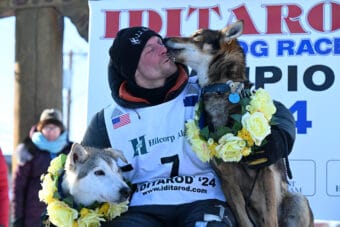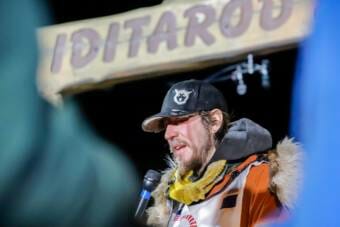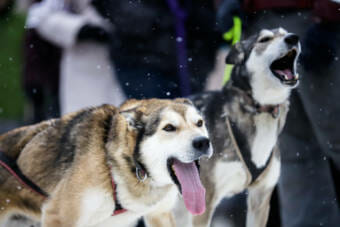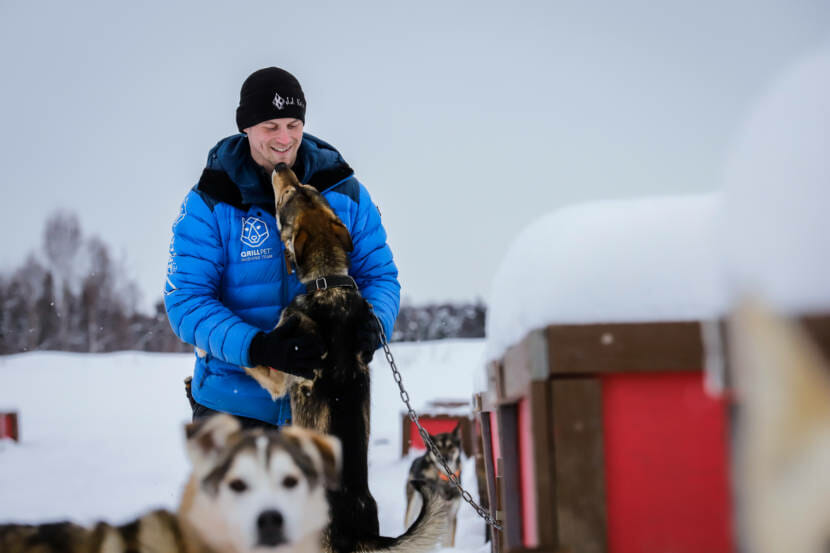
Dallas Seavey stopped every few feet on a recent snowy afternoon in Talkeetna to pet one of his dozens of sled dogs — and to rattle off their personality traits or lineages.
“Yes, West! I know buddy. You’re so wiggly,” the four-time Iditarod champion called out. “North and West, their mother is a Zorro daughter from Lance Mackey.”
Then there’s Prophet, the powerhouse that doesn’t always get along well with others.
“This will be our first Iditarod, huh bud? Hopefully, it’s going to be a good one,” Seavey said.
This year marks Seavey’s 12th Iditarod. But it’s his first since a dog doping scandal turned his mushing career upside down four years ago.
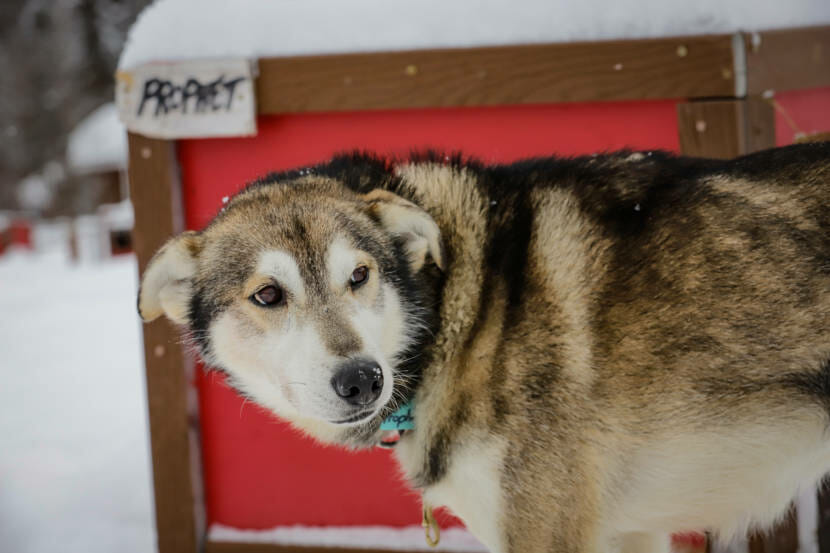
The 33-year-old musher said he’s returning to the Iditarod with a new perspective, and ready to race.
“What was one of the darkest times in my life, I would have to say, is one of the things I’m most proud of now,” he said. “I can honestly look back and say, and feel, that we handled it to the best of our ability.”
Leading up to 2017, Seavey touted an impressive mushing resume.
The former world-class wrestler ran his first Iditarod at age 18, and became the race’s youngest champion at 25.
Then, he won the race again, and again and again — earning a reputation as a focused, serious and competitive musher with deep roots in sled-dog racing. His grandfather competed in the first Iditarod, and his dad has won it three times.
A month after placing second in that year’s Iditarod to his dad, Seavey got a call from the race marshal. The official told him several of his dogs had tested positive for banned pain medicine tramadol after crossing the finish line in Nome.
“And that set off, literally, I would say, without a doubt, the most stressful year of my life, filled with more challenges than at times I thought I was capable of handling,” Seavey said.
The controversy unfolded publicly that fall. The Iditarod’s governing board released information in pieces, saying it didn’t know how tramadol got into the dogs’ systems. Seavey vehemently denied giving the drug to his dogs.
Over the next year, there were lawyers and PR firms and a flurry of statements to reporters.
“It felt like everything that I thought that I was was, you know, peripherally, externally being torn apart,” Seavey said.
Seavey said it felt like the accusations took away from all that his dogs had accomplished and tarnished a key piece of his identity.

Then in the winter of 2018, came an apology from the Iditarod board. It issued a statement saying it did not believe Seavey had anything to do with “the events that led up the positive test.”
As for who did? That’s still a mystery.
“I have theories. I have suspicions,” Seavey said. “I do not have proof.”
Seavey skipped the Iditarod in 2018 in protest. It was the first time he missed the race since 2008.
He went to Norway instead, placing third in the 750-mile Finnmarksløpet.
In 2019, he also skipped the Iditarod for the overseas race. He dropped out in the middle of the competition because several of his dogs had tendonitis.
“I kind of needed a break from the Iditarod. But I wasn’t in a place that I wanted to not be racing dogs competitively,” Seavey said. “And then last year, I took the year off entirely.”
Seavey said he needed time to regroup. He was going through a divorce and finishing the move to Talkeetna, where he has 110 sled dogs and about 100 acres of property. He also runs a sled-dog tourism business there.
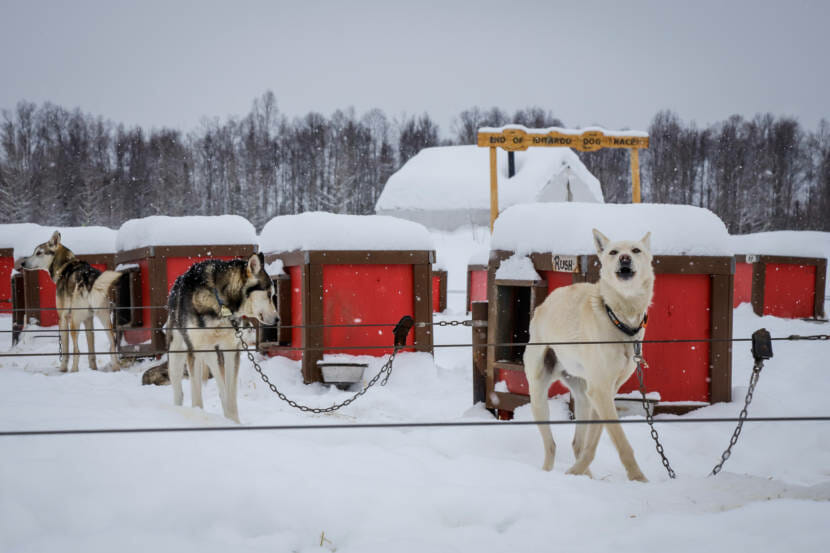
As Seavey stood on the edge of his dog yard last week, he said he always knew he’d return to the Iditarod eventually. Now seemed like the right time, he said.
He’s happy about leadership changes within the race organization. Also, his dad is taking this year off, so Seavey will compete with some of his dogs.
“We’re definitely here to race,” he said.
While Seavey is coming back to the Iditarod with the same drive to compete, he said the past few years have also changed him. He’s a little more resilient and cares a little bit less about what others say about him, he said.
“In a way it’s coming home for me, right?” he said. “This is where I belong, racing the Iditarod.”
The 2021 Iditarod starts March 7.
